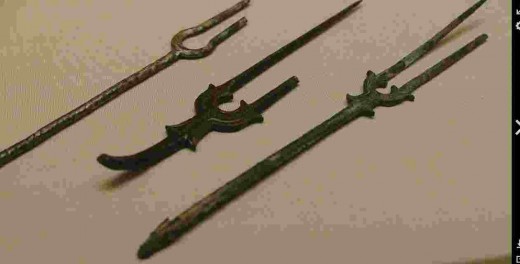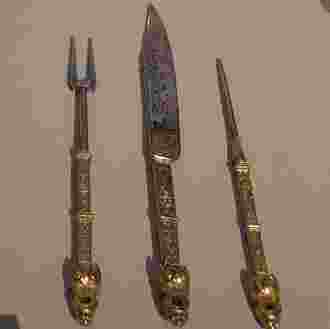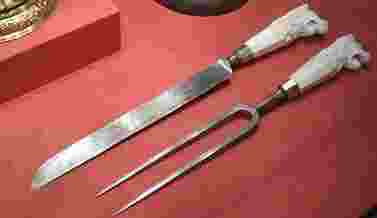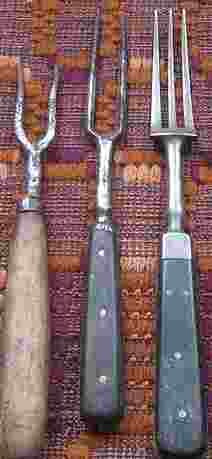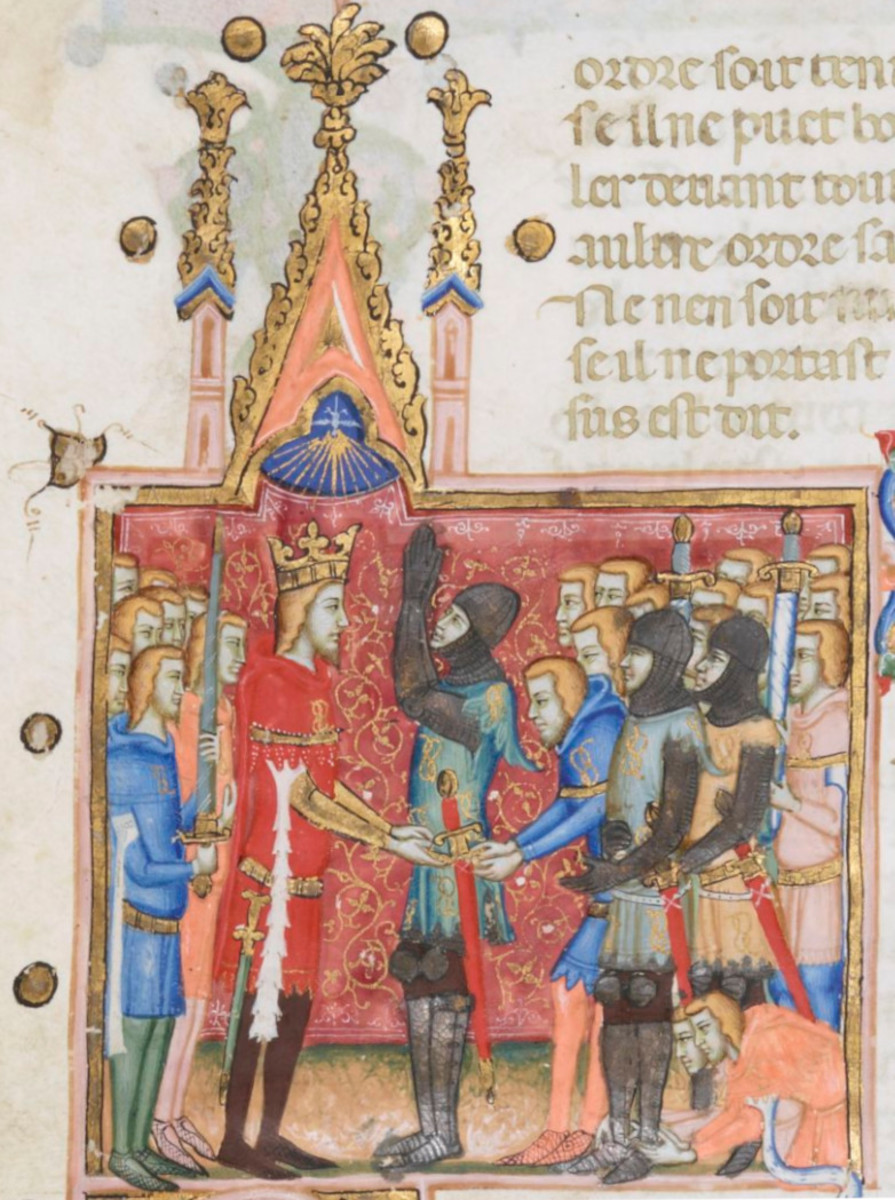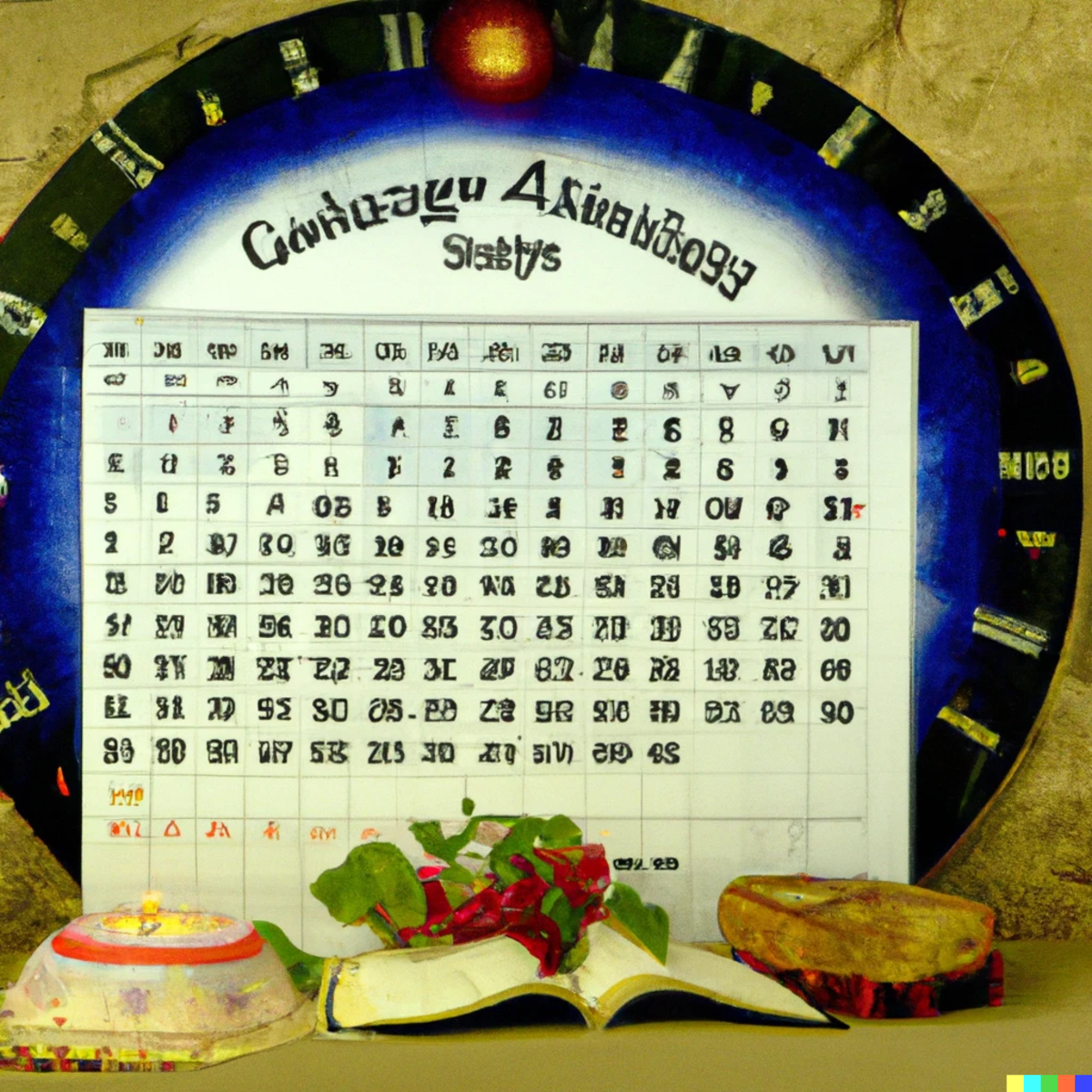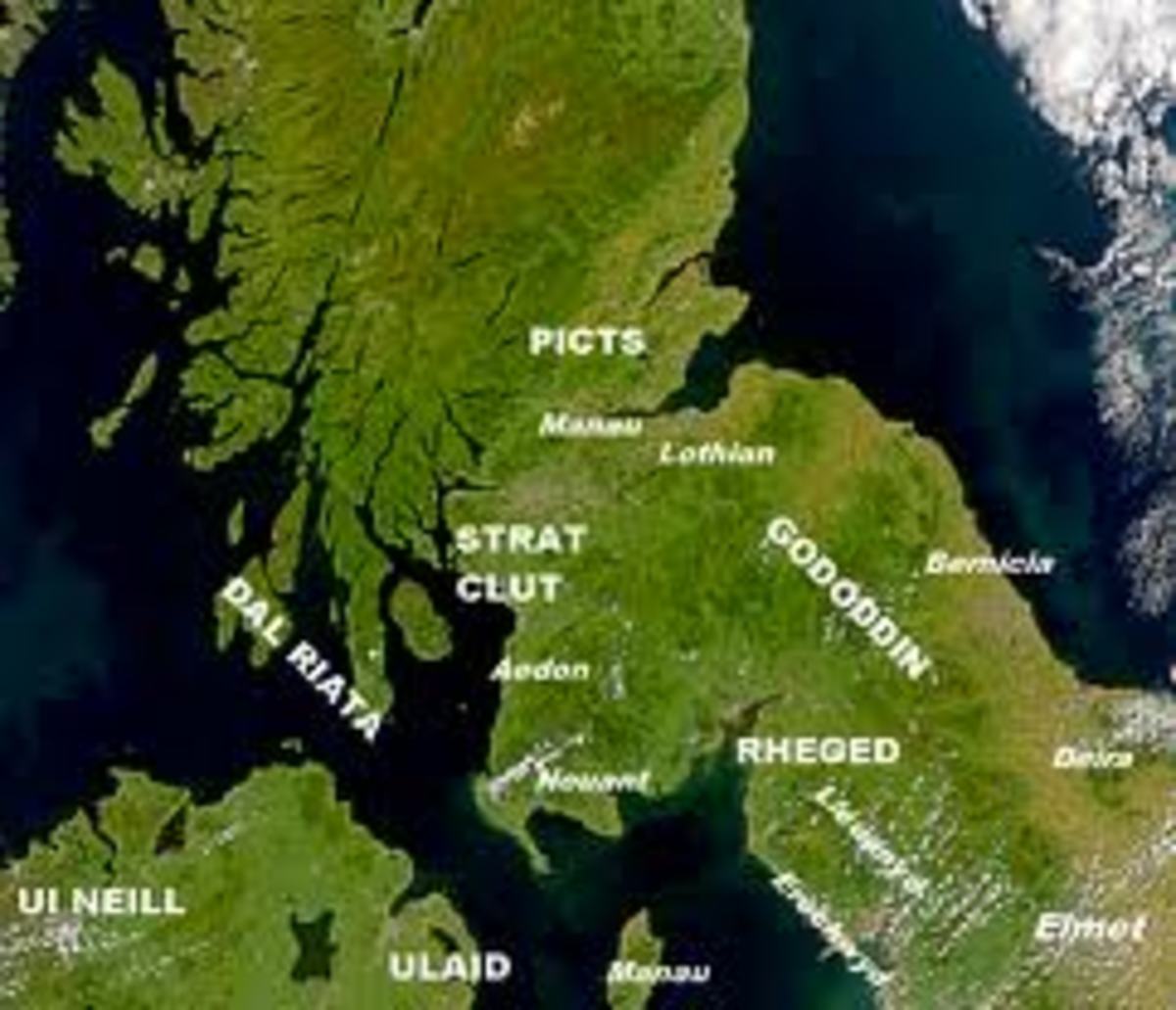The History of the Fork
The History of the Fork
The fork originally was a big kitchen implement used to hold meat on the stove, kitchen or at the table. It was used to hold the meat steady in order to slice it. The fork had a short handle and two long tines.These large forks were even used in the Bronze Age, and were used later in ancient Egypt, China and Greece. The very rich of Rome and Greece also used finger coverings of silver and a kind of small fork to keep the hands clean while eating. But these small implements vanished with the fall of Rome.
Individual two pronged forks were used in medieval life to spear specific juicy or sticky candies and fruits. They were carved at the end of spoons so that one could spear the food and use a spoon for the juice. These 'forks' were also used as toothpicks.
Most people in Western Europe ate with their hands aided by a knife in those days. Today one would think that it was innocuous but the fork was strongly condemned by the church and greater society in the medieval times through the early modern period. Christian Central Europe was introduced to the fork by the Vikings from trade with Byzantium. They thought forks were of the devil. It was also called a diabolical luxury by the Catholic Church, saying that God gave us fingers for a reason. Forks were banished from monasteries. The fork was called an offense to God, substituting metal for what God had given us for eating - 10 fingers. Only prostitutes ate with forks to keep their hands clean.
The first individual fork in Europe in medieval times came from Byzantium in the 11th century. The personal fork was thought to have originated there around the 4th century. The fork spread from Byzantium to the Middle East before Europe. By 900 it was in use in in Persia. The rest of the Middle East adopted it in the century afterward. It was then used in southern Europe after 1000 AD. Some say it also was introduced to Europe through the crusades.
Rich families in Constantinople used silver for their forks. The very rich of that city used gold with jewels on the handle. Princess Maria Argyropoulaina nephew of Constantine VIII, who was married at nineteen to Giovanni Orseolo, son of the Duke of Venice brought a fork to Italy. Hers was made of gold with two prongs and was meant to eat candied fruit although it was said she had her eunuchs cut up her food and she used it so no hand touched her mouth. She was roundly condemned for the fork and it was said that when she died of tuberculosis no one would care for her. This is probably a myth. At any rate the fork spread from Venice to Milan to Florence. By the 1500s it was in common use in Italy.
In most of Europe the individual fork goes back to the 1500s spreading slowly out of Italy as pasta became common and it was too slippery to eat with a spoon or knife. At first pasta was eaten with a long wooden spike, but later it was found with a fork and two tines and then three, it was easier. Then the use of the fork spread to other foods that had sauces. By 1500 it was used in Italy and spread to Spain. Portugal adopted the fork. Some said the fork was introduced even earlier in the late 1400s by Beatriz the mother of Manual I.
But the fork was still considered sinful or effeminate in most of the other parts of Europe. Martin Luther asked that God preserve him from the little fork. In France although brought in initially from Italy by Catherine d'Medici, the courtiers outside of her circle made fun of the fork. Satirists in his grandfather Henry IV's time (after Catherine d'Medici) considered eating with them effeminate and useless.There is evidence it was in use by 1600 in France but Louis XIV (1638-1715) the sun king did not use a fork even though his cleanliness was legendary. He put a damp towel between each dish.
They did not use the fork in England at all until the second part of the 17th century. Elizabeth I had a fork for sweets but preferred not to use it. England was the last country in Europe to adopt the fork. A traveler from England to Italy in 1608 was introduced to the fork. He was amazed that with it, no one in a group of Italians had to lay hands on the meat. When he returned to England and used one, he was subject to ridicule. Forks were considered unnecessary for real men in England for most of the 1600s. Rather, hands were washed in genteel homes many times during meals and different sorts of napkins were offered.
The fork was imported to Russia from Poland in the 1600s. The false Dimitri used one on his wedding feast, which along with his wedding bath, were proof of his foreign origin. In Russia use of the fork by the aristocracy was first introduced by Peter the Great along with his other reforms. The rich previous to Peter the Great had used gloves to eat which were discarded after the meal.
But by 1700 forks were an accepted part of dining of the aristocracy in all of Europe. The use of fork holders was common among the upper classes by the end of the century. In the New World forks were common after 1800. whereas before they were personal items brought with a knife and spoon to the table, inns started to provide them everywhere. After the Civil War they were commonly used in the United States by the regular people. Brazil used them about the same time.
The old forks are often thought to have had only two prongs but they had two prongs for meat and three to five if they were to be used for vegetables. After 1800 they were standardly made with four to serve for both. The four tines were said to have been developed by an Italian engineer Cesare Supadatchini about the end of the 1700s for King Fernando IV of Naples so he could eat spaghetti. The curved shape comes from Germany in the second half of the 1700s, as it makes keeping food on the fork much easier.
Today there are many types of forks but those commonly used have the four tines and are curved. Every place setting in the West includes the fork. It has become social etiquette that one not touch their food unless they are designated as 'finger' food. But this has only been the way food is devoured every where in the West for 200 years. The fork changed everything about the way food is eaten and what is considered good manners in the West.
Forks
